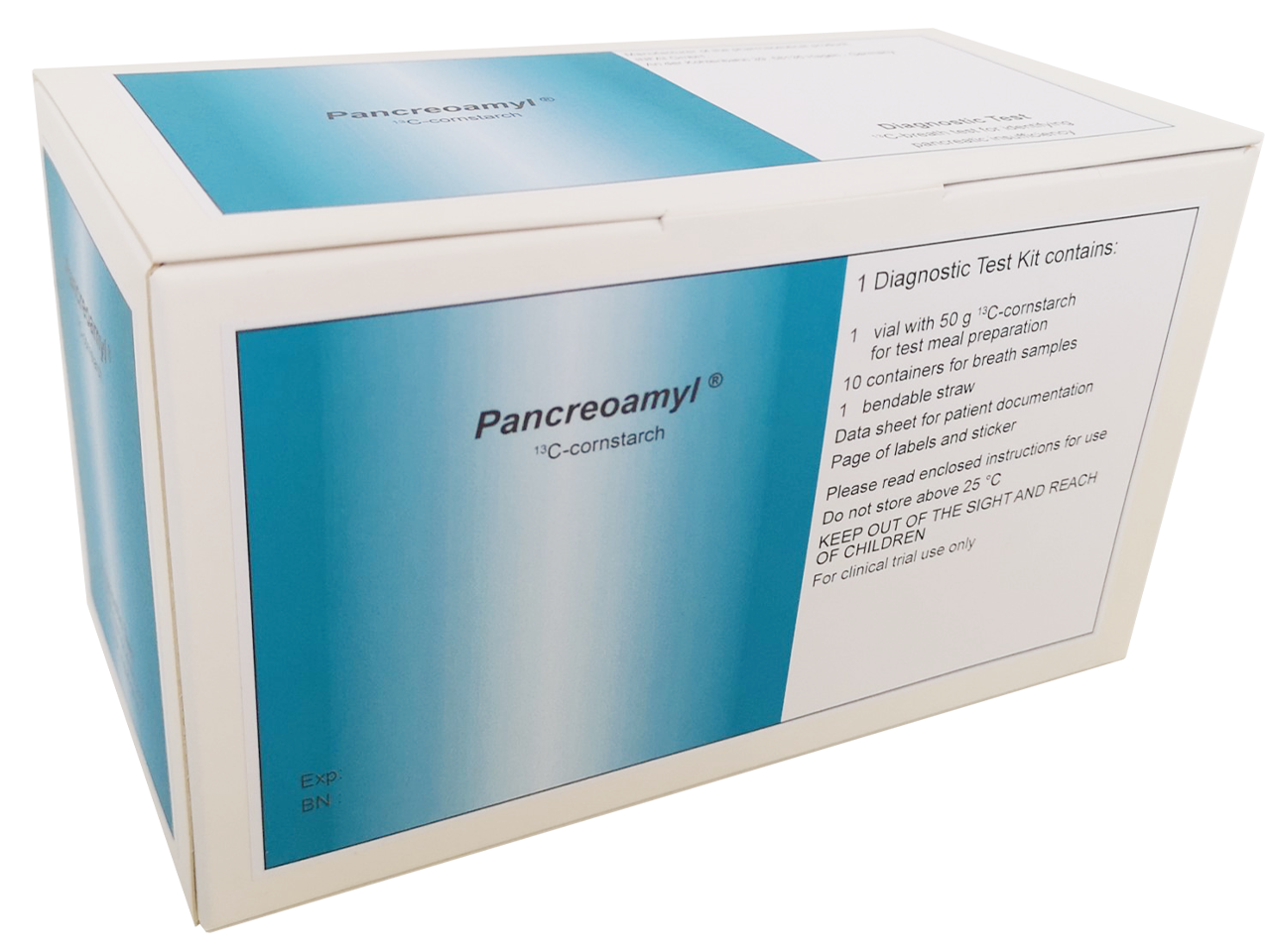Pancreoamyl®
Natural cornstarch breath test to diagnose pancreatic function in severe exocrine pancreatic insufficiency
Pancreoamyl is another test to detect severe exocrine pancreatic insufficiency. The test substance used is corn starch.

Features
Reliable
Cost effective
Simple test performance
Indication for Pancreoamyl
Exocrine pancreatic insufficiency is associated with the decrease of various enzymes in pancreatic juice. Lipase (important in fat breakdown) and amylase (hydrolyzes starch) are important components of pancreatic secretion into the small intestine. The Pancreoamyl is a ¹³C maize starch breath test to detect amylase in vivo and thus measure pancreatic function. Conventional methods require stool samples, so an effective breath test, especially when based on a naturally occurring substance such as cornstarch, is an attractive alternative.
Test principle and test performance


Pancreoamyl differs from most breath tests in that the substrate is a naturally occurring substance. Starch derived from corn contains more ¹³C than starch from other sources such as rice or potatoes. This difference, which is related to the different type of photosynthesis, is quite small, but is sufficient to use corn starch as a naturally labelled substrate. This is at least the case in moderate climates, where carbon in food has a lower ¹³C content than corn.
Like most breath tests, the test principle of Pancreoamyl is based on the fact that carbon substrates are absorbed in the small intestine and oxidized to CO₂ via the liver, and the resulting ¹³CO₂ enters the blood and very soon appears in the breath. In this way, pancreatic function can be determined in the case of severe pancreatic insufficiency.
The test is non-invasive, safe and can be repeated as often as required. INFAI has shown that the test detects severe pancreatic insufficiency with high sensitivity (88%) and specificity (82%).
After nightly fasting, two basal value breath samples are taken by breathing with a straw in 10 ml test tubes. The tubes are sealed with rubber stoppers and stored for further analysis.
The substrate (50 g free cornstarch in 100 ml water) is taken and further breath samples are taken and stored at half-hourly intervals within five hours.
A mathematical analysis of the ¹³CO₂ excretion curve from the naturally labelled maize starch allows the identification of a patient with reduced amylase activity, which in turn signals exocrine pancreatic insufficiency.
More Information
Publications
- ¹³C-starch breath test comprative Clinical evalutation of an indirect pancreativ function test Löser C., Möllgaard A., Aygen S., Hennemann O., Fölsch U. R.; Z. Gastroenterol. 33 (1997) 187-194
